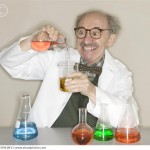 With most organizations striving to become more innovative, it would seem a good capability to possess is the ability to understand both how ideas emerge, and what a good idea looks like. I’ve written before how important it is that organizations understand the process of innovation, and that few innovations are truly revolutionary. Most either build upon what has gone before in a big way, or recombine what has gone before in new ways.
With most organizations striving to become more innovative, it would seem a good capability to possess is the ability to understand both how ideas emerge, and what a good idea looks like. I’ve written before how important it is that organizations understand the process of innovation, and that few innovations are truly revolutionary. Most either build upon what has gone before in a big way, or recombine what has gone before in new ways.
Knowing what kinds of combinations are likely to derive a successful innovation is rather useful knowledge to have however. A recent study from Columbia University sought to discover just such a formula.
The researchers conducted a series of eight experiments whereby participants were required to generate ideas around a particular topic. Over 4,000 were generated in total, and each was evaluated by a panel of judges, who consisted of industry experts, consumers and members of an innovation community online. Each idea was subsequently rated according to its creativity.
“We borrowed techniques from the world of big data, such as text mining, in order to automatically ‘read’ thousands of ideas and predict ideas that would be perceived as the most creative,” the researchers say.
The researchers used network analysis to explore the relationship of the ingredients that exist within each idea to gauge its novelty. The researchers use a cooking analogy to explain their approach.
“If we ask someone to come up with an idea for an omelet, and they say, ‘I’m going to mix eggs and cheese,’ they’re picking a combination that is very common and familiar,” they say. “But if the idea is to mix eggs and mint, that’s a less common and more novel combination.”
The network analysis would thus enable the researchers to determine how much of each idea was novel and how much was familiar, before hopefully discovering the optimal mixture of the two. This optimal combination utilized the beauty in averageness effect, which underpins our idea of a beautiful face as having prototypical, commonly occurring features. In this vein, ideas with a prototypical mix of novelty and familiarity were believed to be more creative.
The hope is that the insights will go into a tool that can assist people with the creation of innovative ideas. They tested out their tool in a final experiment that involved the creation of a smartphone app in the healthcare field. The researchers used the 500 suggestions as their baseline, from which they could then suggest to subsequent innovators improvements to their own ideas.
“We have all of these big data tools; we can analyze tags and social networks. Most of these tools are just used for targeting and advertising,” the researchers say. “But we can also use them to help people.”
Hmm, interesting. Can creativity really be boiled down into an algorithm though?
I suppose that will very much be the proof of the pudding. Hopefully they'll be able to expand their experiment to a much wider sample and test things out fully.